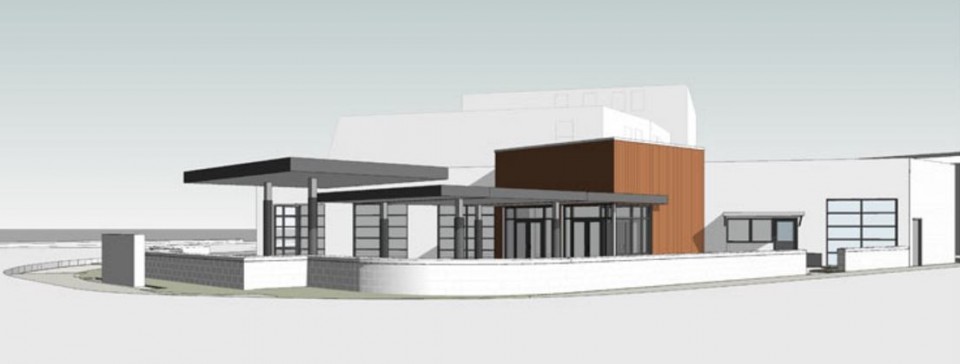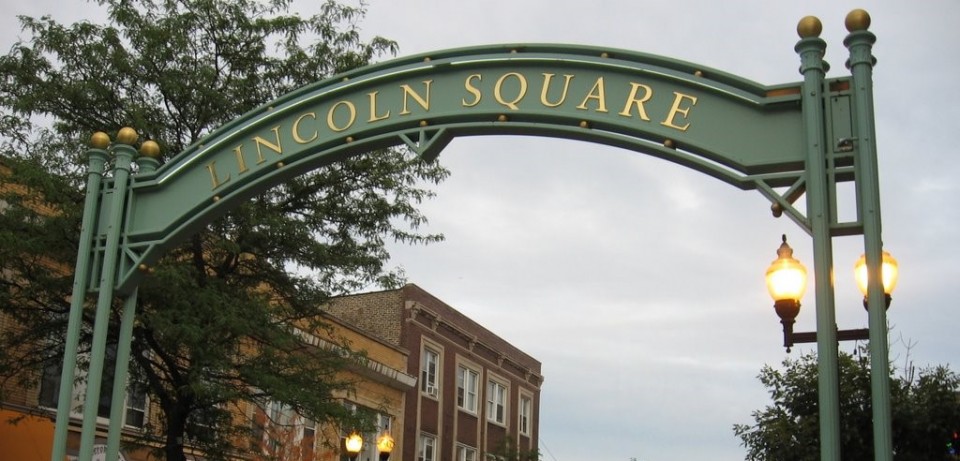
Aug 16, 2016
by Emily Spectre, Daily North Shore • August 10, 2016

Plans are in the works for a new restaurant located at 574 Green Bay Road in Winnetka, formerly the home of Fred’s Mobil service station.
The developer and owner of the property, Alfred Stepan, told DailyNorthShore.com on August 10 that he has entered into 10-year lease agreement with the operators of Ten Mile House, a popular restaurant in Evanston. Stepan is a managing director at SVN, a commercial real estate firm in Chicago.
“We are very excited about the project,” Stepan said. “They are great operators. We struck a lease deal over a period of a few months,” he added. The new restaurant will be family friendly and feature American cuisine, he said.
Robert LaPata, one of the restaurant operators, said the new restaurant will not be the same as Ten Mile House, but will have the same feel, including “a crisp, clean family friendly yet sophisticated-enough-for-adults atmosphere,” he said. LaPata expressed his enthusiasm about the project. “We’re excited at the opportunity. We think it will be a great addition not only to Winnetka, but the entire North Shore dining scene,” he said.
Stepan purchased the property last March and immediately removed the underground tanks. He plans to adaptively re-use the existing building, which will be extensively renovated by LG Construction and include a 900-square-foot addition. The outside cladding will be removed and recovered with stucco and stained reclaimed wood material.
The plans include a large outdoor patio with seating, extensive landscaping and hardscape improvements. Stepan said he hopes to break ground by early to mid-September and complete construction by early December. He estimated the restaurant would open by late spring 2017.
“It’s a great property. A signature property of the downtown and it’s going to be beautiful when we are done,” Stepan said.
According to Brian Norkus, assistant director of community development for the village, the project is fully compliant with zoning and does not require any special zoning approval. Norkus said the village approval process is essentially complete, with a few minor exceptions for the tenants. “We’re hoping to see a ground breaking very soon,” Norkus wrote in an email to DailyNorthShore on August 10.
The village is also enthusiastic about plans for a restaurant in this location ,which they hope will become a dining destination. “We think that the work will fit exceptionally well with other nearby businesses, bringing more patrons north on Chestnut Street,” Norkus said.

(H/T jwcdaily)

Aug 2, 2016
Have you heard? Days after its’ US release, Pokémon GO took over the digital planet! Pokémon GO almost immediately became the number one free app in Apple’s US iTunes store.1 Within two days, it was installed in 5.16% of all US Android devices.
Best of all, you can capitalize on the craze—it’s easy and affordable (two of our favorite words). According to Slate, Pokémon GO players are making restaurant choices based on the availability of Pokémon in the area. And, restaurants are using that fact to attract customers.
First, download the app! See if your restaurant is a PokéStop or PokéGym. You’ll get natural Pokémon traffic if you’re in or near a stop or a gym, where players walk and gather to gain supplies and experience. For the most part, stops and gyms are located in/near public spaces, such as parks, churches, libraries and statues
Then, try some of these tactics to capture more business:
- Lure ‘em in! You don’t need to be a gym or a stop. The game lets anyone attract Pokémon (and therefore its players) using Lures. These Lures are purchased in the app–for only $1 each! They can draw a rush of Pokémon for 30 minutes. Time your Lures to build foot traffic when you need it.
- Share captures. Use social media to share images of your (or your employees’) Pokémon victories. And encourage your customers to do the same—then share those, too!
- Encourage teams. You can also use social media for Pokémon-related promotions using the three teams/colors: Instinct/yellow, Mystic/blue and Valor/red. For example, The Fat Grass in Bay City, Texas offers $2 kamikaze shots in Pokémon team colors on its Facebook page.
- Offer power stations or cords. The app burns LOTS of battery. And while Poke hunters power up, encourage them to fill up on food and libations.
- Submit a PokéStop or PokéGym request. You can now submit a request here to add a PokéStop or PokéGym at your location. Only businesses locations are allowed to be submitted for request, not homes.
Add this insanely popular ingredient to your marketing mix. Use Pokémon GO to heat up your summer business and position yourself to grow with the Pokémon demand.
(H/T restaurant.com)

Jul 20, 2016
The food and dining scene in New York City is constantly flourishing with new, hip restaurants taking center stage. Most recently, it has been common to see one of these restaurants in the corner of a hotel or within a mixed-use property. Take the Michelin-starred Breslin Bar and Dining Room, the newest brainchild of Chef April Bloomfield and restaurateur Ken Friedman, which is located at the Ace Hotel in Midtown Manhattan, along with John Dory Oyster Bar, Stumptown Coffee Roasters, No. 7 Sub and a number of retail clothing stores.

As part of a mixed-use property, restaurant owners are housing their bread and butter alongside a variety of residential, commercial and retail neighbors. An efficient and beneficial way to serve your marketing and business needs, opening up shop within such a property allows you to feed off other businesses surrounding you. Of course, it’s not all fun and games when sharing space with others. You may face some stumps and hurdles, and must consider whether this is the right move for you and your restaurant.
This may be your first gig where you are considering all options when selecting the ideal location for your restaurant. Or, you may already own a freestanding restaurant and are looking to open your next branch. In either case, you must understand the key differences between the two differing opportunities, and what they have to offer you.
The primary benefits of a location within a mixed-use property are twofold: 1) support from being part of a development community and 2) traffic from surrounding businesses and tenants with similar interests.
Newer mixed-use developments usually are more code-compliant and have better facilities. The space is typically built from the ground up and so has been constructed with specific purposes in mind from the get-go. The landlord wants to see your restaurant succeed and may offer leasing incentives.
Being part of a community of facilities can reap great benefits, in terms of branding and exposure, especially if you are located on the grounds of a well-known hotel. In this case, although the space may be more expensive, your success may lead you to future opportunities with the hotel if it opens other locations in the city or abroad. Just as they can help enhance your reputation, your success gives them more exposure, too, and similarly aids in their success. Similarly, other tenants, whether they are other restaurants or retailers, can help your business flourish, while simultaneously you help theirs. In the best cases all businesses located within such a property share a synergy and economies of scale.

Anyone considering opening a restaurant in a mixed-use property must also examine the legal realities to negotiate the best deal. It’s important to research the types of businesses that will be part of the project, especially if it involves a hotel. Often restaurants located within a hotel are responsible for providing breakfast and roomservice, for example.
It’s also crucial to examine the lease or contract to see if they are part of a net lease that usually includes Common Area Maintenance (CAM) charges. The operator should also consider the complicated interplay among the hotel, offices, residential and restaurant, including common areas, shared responsibility and costs, the insurance landscape, maintenance, tax escalations, union rules and service level agreement issues.
When considering the best space for your new restaurant, it’s all about location, location, location. So make sure when you do decide to mix, you mix well.
Bruce Bronster is a real estate and hospitality partner at Windels Marx Lane & Mittendorf, a New York-based law firm. He focuses on hospitality and restaurants, commercial disputes, tax lien and mortgage foreclosures, and provides general business advice.
(H/T restaurant-hospitality.com)











